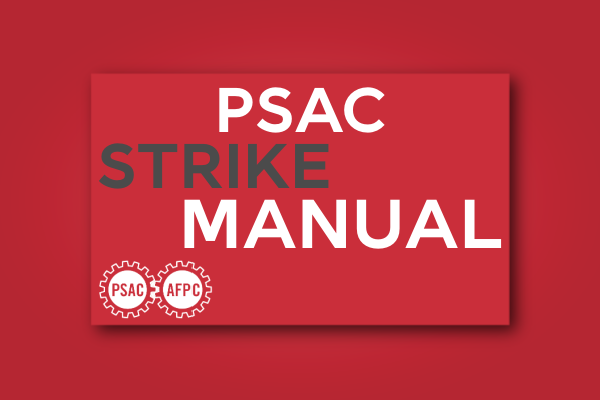
3 minute read
Strikes – different strokes for Different Folks.
from PSAC Strike Manual
by YEU/PSAC
A strike is when unionized workers withhold their labour in an effort to pressure their employer into meeting their demands. Workers go on strike after negotiations have broken down or stalled. The goal is to compel the employer to return to the bargaining table and address workers’ demands.
Advertisement
There are different types of strikes that serve different purposes. They may escalate in their intensity:
A work-to-rule is when workers obey all the laws and rules applying to their work, but perform their work more slowly or follow “the letter of the law” in an effort to stall productivity.
A sit-down strike is a strike in which the workers refuse to work, but stay inside the employer’s place of business.
A sympathy strike is a concerted work stoppage by workers in one bargaining unit to express solidarity with striking workers in another bargaining unit.
A study session is a short “practice” strike that demonstrates to management what the consequences would be of a more prolonged strike.
A secondary strike is a strike called against one employer with the aim of influencing another.
Whipsawing describes a series of successive surprise strikes by a union against the various employers in an industry or in an employer’s association, one after another, so that no employer knows which one will be “sawed off” next.
A PSAC general strike is a cessation of work by all PSAC members in a particular bargaining unit. (General strike pay provisions apply.)
A rotating strike is a series of surprise, up to day-long work stoppages of all bargaining unit members at various strategic geographic locations (i.e.- Ontario members on Monday, Quebec members on Tuesday, etc.).
(General strike pay provisions apply)
A strategic strike is a work stoppage by limited number of members of a bargaining unit at a specific number of locations. For PSAC this is 10 per cent of the members of the bargaining unit and is gover ned by the Alliance Executive Committee. (Strategic strike pay provisions apply.)
A sector-wide strike (or industry-wide strike) is a strike by all of the organized workers in a particular sector or industry.
The term scab is a “fighting word” that refers to people who continue to work during strike action by trade unionists. The act of working during a strike is also known as crossing the picket line. Replacement workers undermine the demands of the workers on strike and are termed “scabs” by those in favour of the strike.
A lock-out occurs when the employer exercises its right to prevent bargaining unit employees from working when in a legal strike position.
During the national strike in 2004, we managed the almost impossible at a meeting of the Joint National Council. Two hundred and fifty members belonging to Table 2 entered the Ottawa Congress Centre without being seen by the police. When Reg Alcock, who was President of the Treasury Board at the time, arrived, all of the 250 members entered the conference room where the meeting was being held. Donald Bédard, president of Local 70020 walked to the podium He spoke to everyone in the room, Employer and union representatives, as well as the strikers. All of the union members rose to give him a round of applause.







